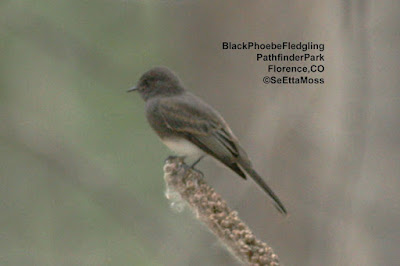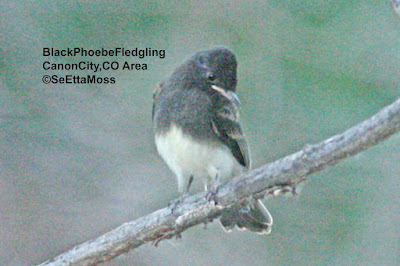Two juvenile Black Phoebes

Today I returned to Pathfinder Park where I had seen a Black Phoebe in juvenal plumage two days ago and thought I might have seen a second Black Phoebe. I refound one Black Phoebe quickly and waited a few minutes-then a second Black Phoebe appeared nearby. Both were in juvenal plumage. I stuck around watching them forage but no parent bird appeared so these have apparently reached independence. I had two juvenile Black Phoebes on a pond at my friend's place last week but they had moved off a few days ago. Since this is less than 2 miles from my friend's place and the timing is right I suspect these may be those birds that are moving around in post-breeding movement. SeEtta



